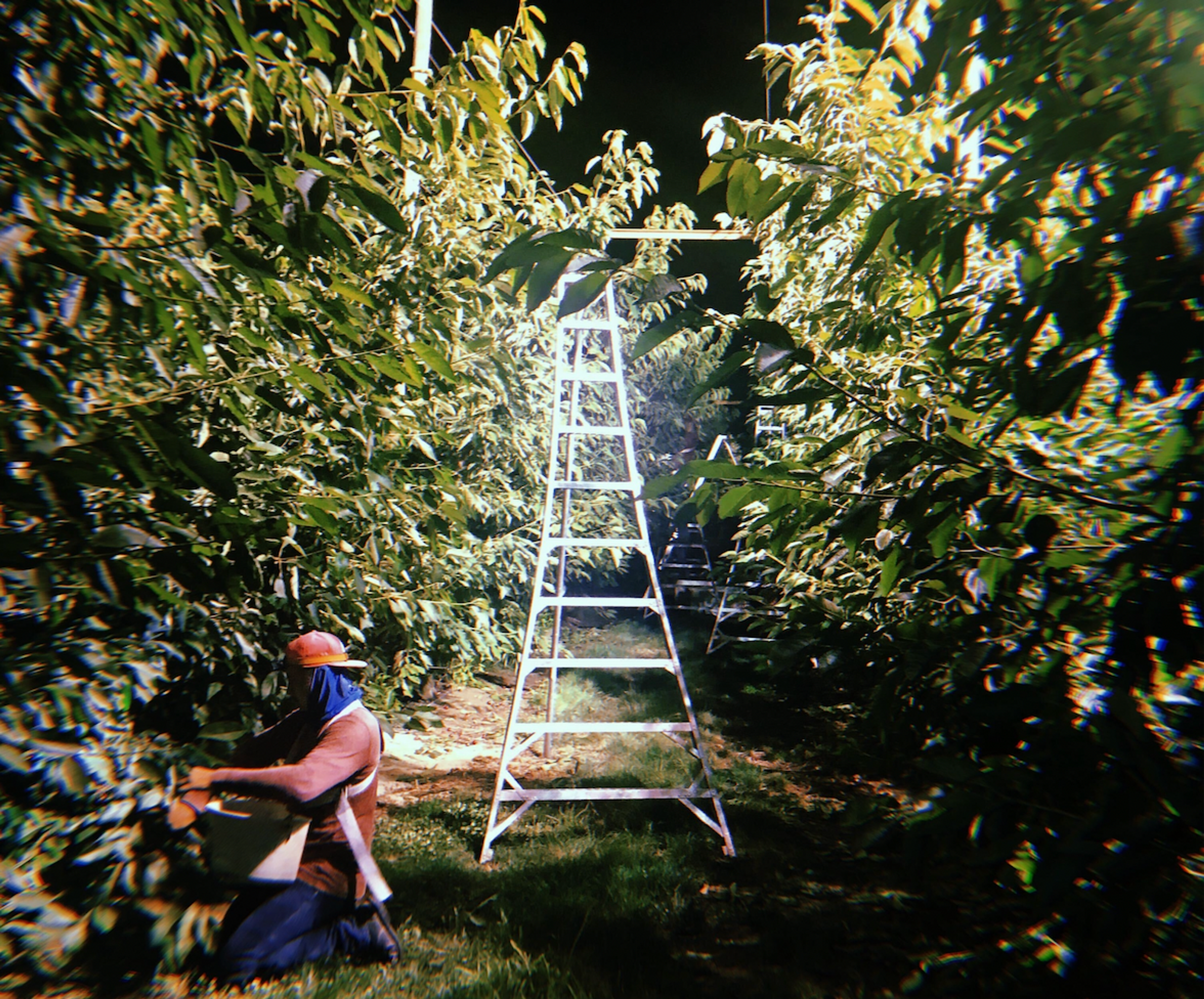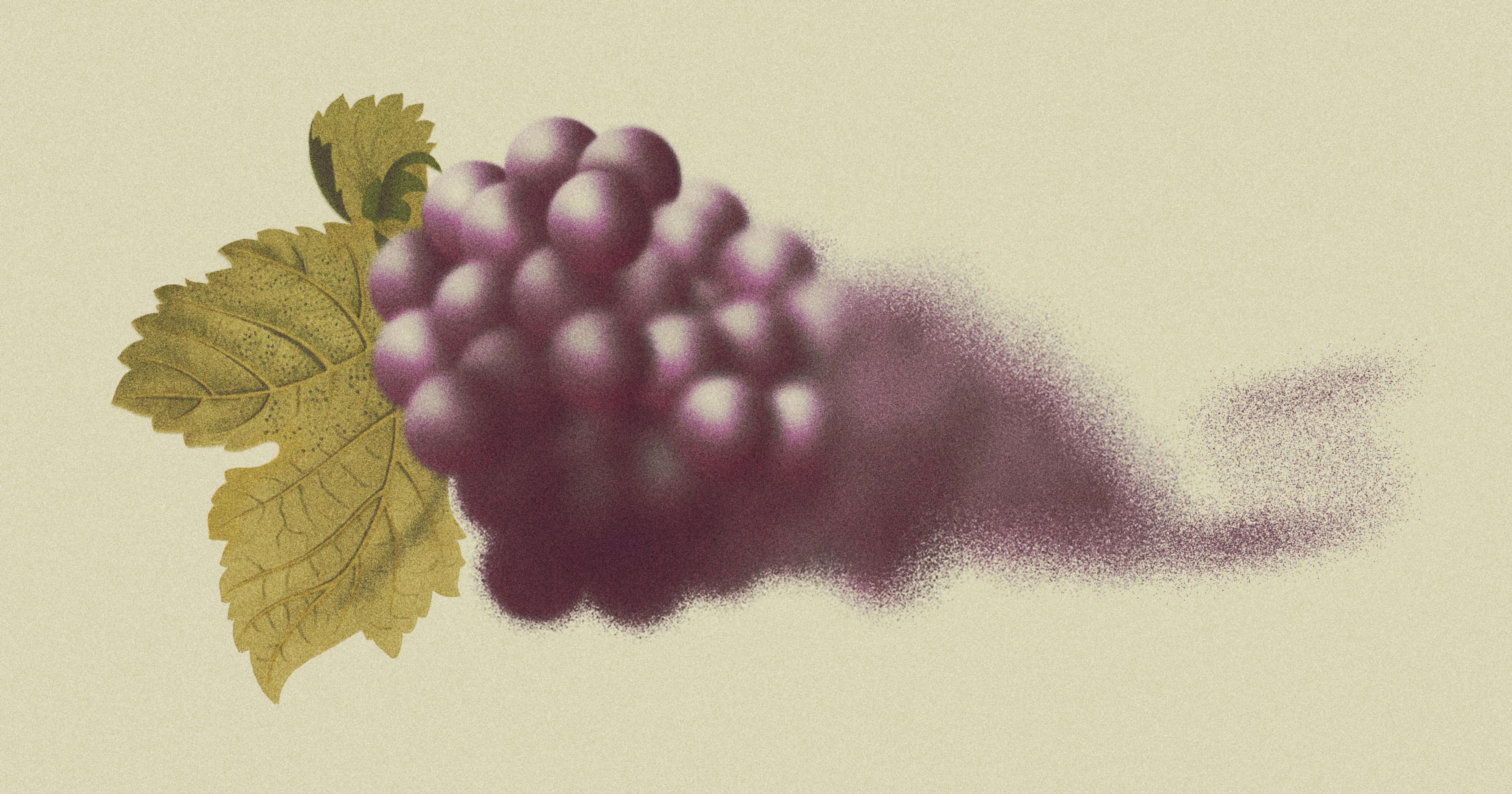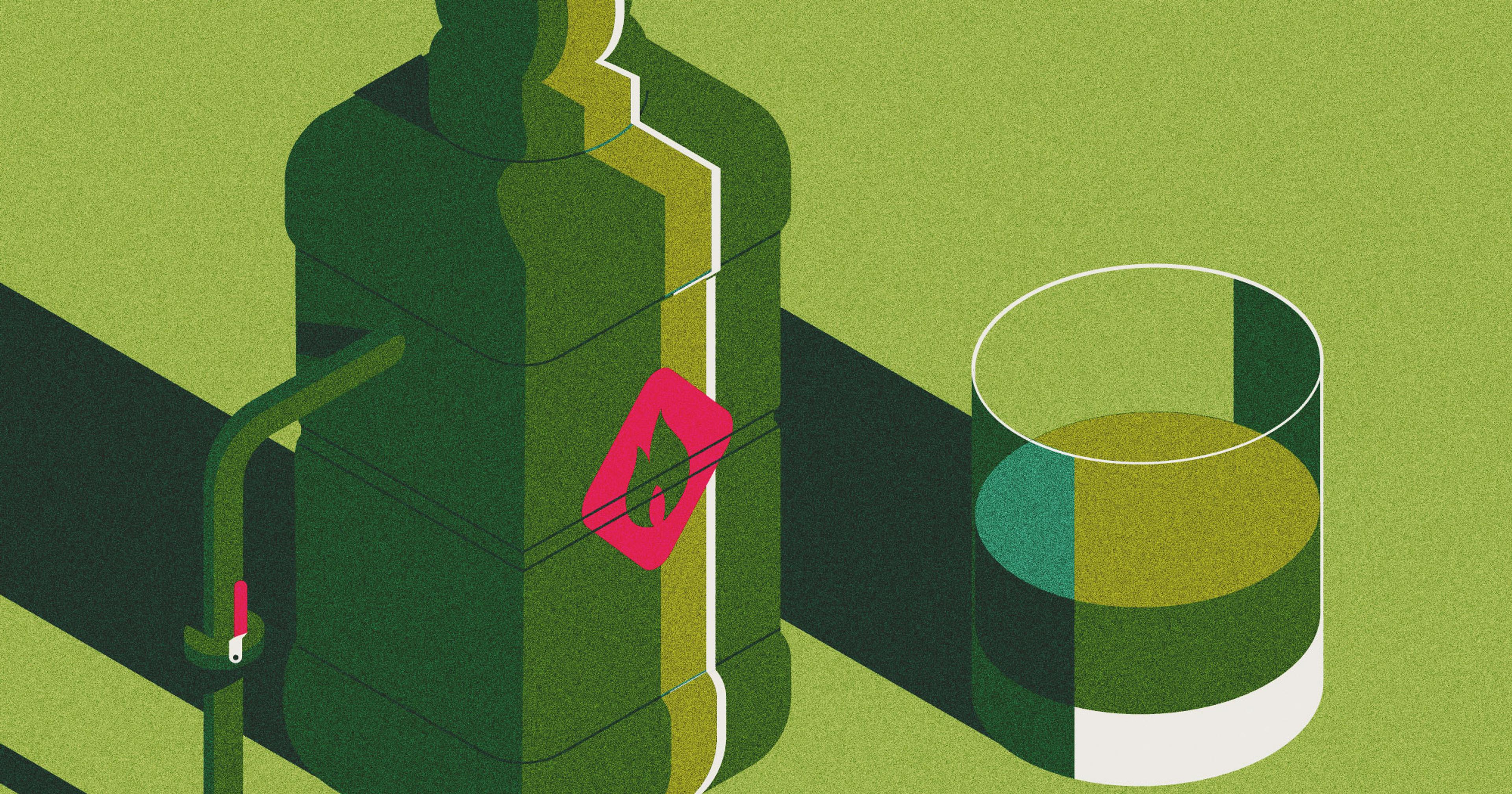Stone fruit producers face increased protection costs due to climate change.
Farmers are facing increased pressure to adapt to a changing climate after suffering a summer of record-setting heat in the Pacific Northwest that damaged crops and caused production complications.
It’s a growing problem as climate change drives more frequent severe weather. The record heat event illustrates the immediate threat, especially in a region known for its mild climate. In June of last year, temperatures soared to record highs in the Northwest. Seattle recorded a new all-time high of 108 degrees, and Portland saw 116 at the peak, while recording several days above 100.
In Washington’s agricultural region east of the Cascades, that meant a scramble for growers to protect valuable fruit crops. Washington is the number one producer of apples and sweet cherries in the United States.
Dan Plath is president of orchard operations at the Washington Fruit and Produce Company, which grows apples and cherries in Grant County. “Nobody had ever experienced anything like it before, with a few days at 115 degrees or hotter at a lot of locations in eastern Washington,” he said. “And we had some high temps during our cherry harvest too, even before that extreme heatwave hit.”
That record-setting heat came with significant risks to operations like Plath’s. If cherries are harvested at too warm a temperature, the fruit risks bruising and “pitting” of the surface. Apples can face sunburn, which ruins their value on the fresh market. “Certainly with the cherry crop, the stakes are that you can lose your crops,” Plath said. “And we did walk away from portions of some blocks.”
“Certainly with the cherry crop, the stakes are that you can lose your crops.”
While the record setting temperatures were a statistical abnormality, research shows climate change is already making extreme weather events more frequent. NOAA climate data shows excessive heat covering more than 50% of the Northwest happened just three times in the first 90 years of data, but already occurred six times in the last 20 years.
Jim Keller manages the orchards of Apple King in Yakima, Washington. He thinks they made out better than most because their higher elevation orchard topped out at a slightly milder 108 degrees. Apple King did increase application of Surround, a clay-based coating to protect apples from sunburn, as a precaution. Still, they lost yield, especially in the cherry crop.
“Normally when we’re packing our cherries we’re between 88 and 92% pack out,” he said. “And this year, we started that way on the first few days, and then every day the heat stress got more and more to them, and we finally quit picking some blocks when we got down around 60% pack out. So we’d lose 30%.”
He also noticed the heat changed the harvest timeline, bringing fruit grown at higher and lower elevations to ripen at the same time, which flooded the market and suppressed prices. While most of his apple crop escaped significant damage, he did discover some sunburn issues. He also believes the fruit was about 10% smaller overall, as heat stress pushed trees to focus on survival over fruit production, and individual apples lost size.
Summer heat is nothing new to farmers, but industry experts say the unseasonable timing and extreme highs made the situation especially difficult. “So to see those [temperatures] in June was earlier than many folks were expecting and prepared for,” said Jon DeVaney, president of the Washington State Tree Fruit Association. “That carried with it a couple of big concerns for people producing in agriculture, particularly for tree fruit.” He estimates that 15-20% of the statewide cherry crop was lost to heat damage.
“There certainly were quite a few growers who really had very substantial losses and would not have any fruit that they could harvest,” he said. “For apples, the damage was not as consistent, which was good for those producers. But it did still cause them some lost fruit, and additional complexity in harvesting where fruit around the perimeters of the tree could be damaged.”
It’s not just tree fruit crops at risk in a changing climate, says NASA ecosystem researcher Shashank Konduri. “Whatever repercussions we all noticed in the Pacific Northwest in this particular case, actually applies to a broader category of all crops and how they respond to growing season increases in temperature, as well as these spikes in extreme weather patterns that we are noticing across the globe,” he said.
In 2020, he authored a research paper that found extreme weather events have enough impact to warrant inclusion in yield modeling projections, thanks to the effects of climate change. “That is also an associated increase in the likelihood of an increase in the intensity and duration of heat waves and extreme precipitation events,” Konduri said. “So with the growing occurrence of these extreme events, there is a greater chance of declining crop yield, not just in the U.S., but across the major breadbaskets of the whole globe.”
Heat is not the only climate threat agriculture faces now, and in years to come. Massive wildfires along the West Coast have blanketed the region in smoke several times in recent summers, making it more difficult for apples to develop proper color, Plath said. Some producers have reported smoke taint of grapes, rendering them useless for winemaking.
Northwest farmers also worry about winter precipitation in the mountains that falls as rain instead of snow. This moisture quickly disappears instead of contributing to snowpack, which melts well into the drier summer months and provides water for irrigation.
In response, individual producers are working to adapt and improve resiliency. In the 2021 heatwave, Northwest fruit growers used a variety of methods to protect their products. Increased irrigation was used where water was available. Plath said his operation continues to expand their use of shade cloth, though it is costly. Overhead water cooling and misting helped as well.
His operation and Apple King also had crews pick fruit at night, sparing both people and produce from the peak daytime heat. “The night harvest really didn’t cost us that much more,” said Jim Keller. “We had to go buy headlamps. And the guys liked it a lot better because it was cooler. Actually, some of the pickers told me it was easier to pick because you’re more focused on where you’re picking, because the headlamp is shining right where you’re at. They thought they picked more at night than they did in the daylight.”
“It made me nervous because I worried about people falling,” he added. “But it worked out OK.” But DeVaney noted many of these mitigations came with an additional financial cost that may not work for all operations.
“I wouldn’t say it is likely to be an existential threat to the whole industry, because there’s the ability to adapt where and how you plan things,” DeVaney said. “But for individual producers, that can mean the location of their orchards or the need to replant to a different variety at great expense. It takes about $50,000 per acre to replant an apple orchard, for example, to a different variety. That is a huge cost. And not every producer, especially a very small producer, can afford to make those costly adaptations. And so for that producer, it definitely would be an existential threat.”
“And not every producer, especially a very small producer, can afford to make those costly adaptations.”
Konduri also noted that some of the more successful interventions – like shade – are only feasible in certain cases. “But some of them may not be applicable to row crops, or cereal crops that are grown across the U.S.,” he said. “And some of them also require a lot of investment.”
Still, growers like Plath and the Washington Fruit and Produce Company are looking to stay ahead of the curve. He wants to ensure that as a fourth-generation farmer, he isn’t the last in his family to do this work. “We’ve been around for 105 years, and we’d like to be around for another 100 years,” Plath said. “So we try and stay the course and do the right thing today.”
“Adapt or die,” he added.







